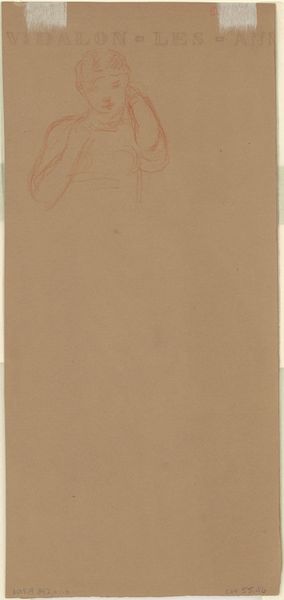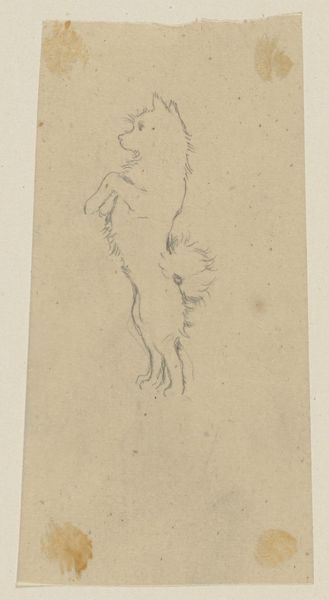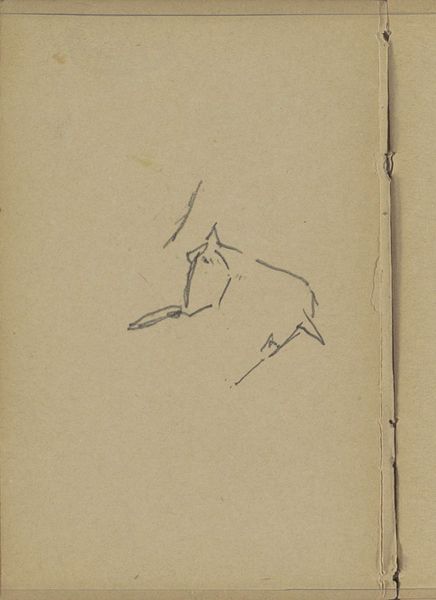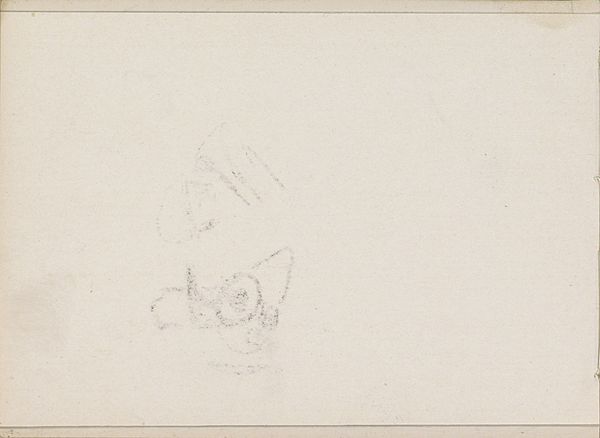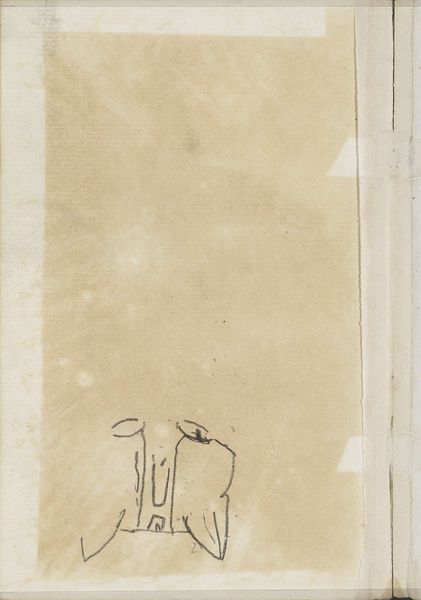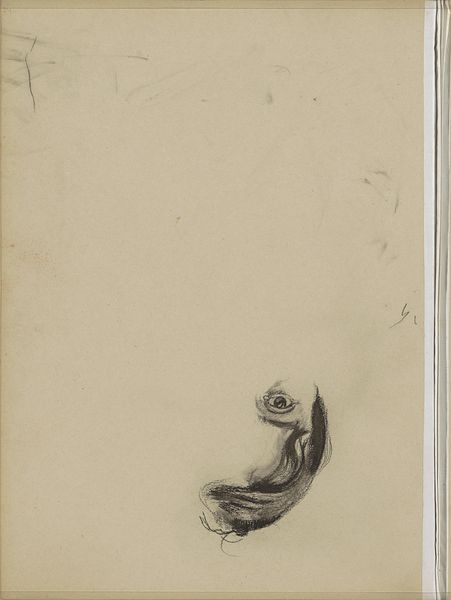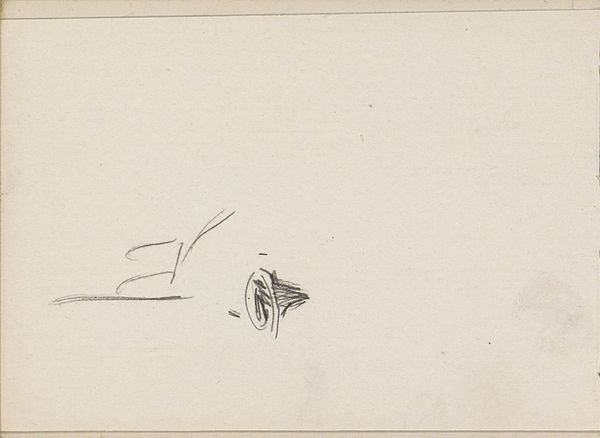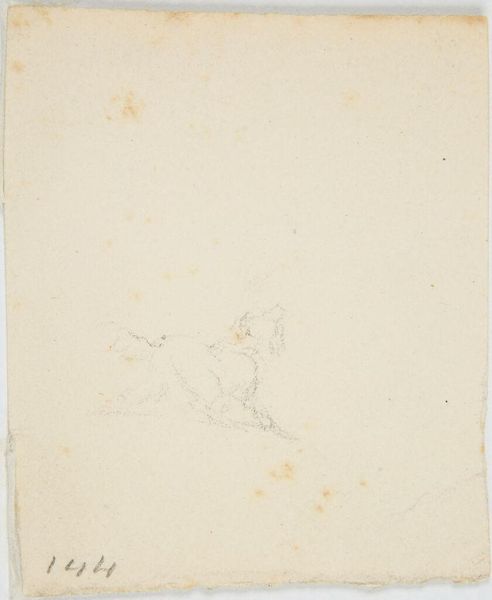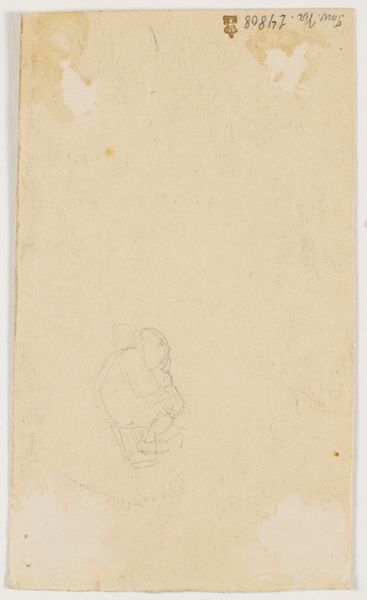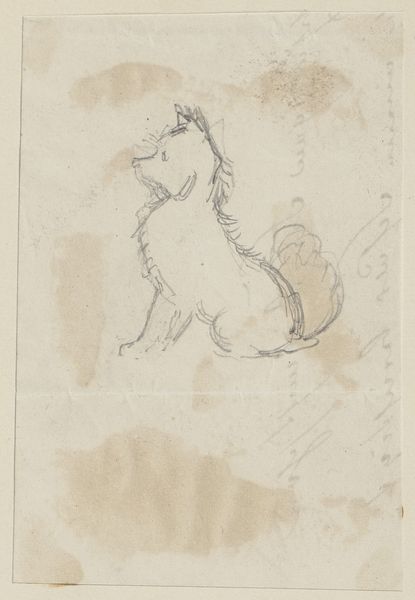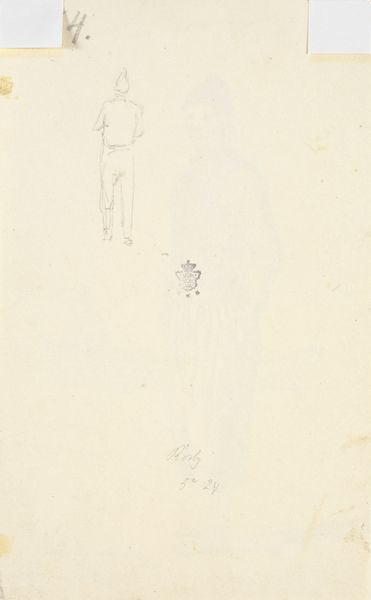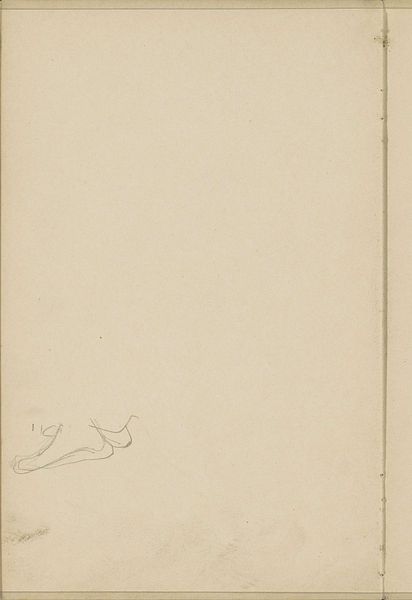
Der Hund des Mondes, sitzend und nach oben schauend, nach links c. 1867 - 1868
0:00
0:00
Copyright: Public Domain
Curator: This delicate graphite drawing is Paul Konewka’s, "Der Hund des Mondes, sitzend und nach oben schauend, nach links," made around 1867 or 1868. It resides here at the Städel Museum. Editor: My initial reaction is melancholy. The lone dog, seemingly howling at the moon, evokes a sense of isolation. There's also a beautiful fragility to the line work. Curator: Exactly. Look at the sparse, almost ethereal application of the graphite on paper. It reflects Romanticism's interest in evoking emotion and the sublime. It’s very minimal but intentional, look at the implied circular mark behind the dog suggesting the moon! The materials speak of access too: drawing was cheaper and more transportable than oil paint at the time. Editor: And what about that canine figure itself? I think about dogs in mythology and art representing loyalty, guidance but also, sometimes, foreboding. A dog howling at the moon connects us to broader questions of natural cycles, mortality. Who did the artist intend as his audience? What’s reflected of German culture here, from its focus on Romanticism, nature and landscape? Curator: The printmaking industry in the mid-19th century, for instance, transformed art accessibility. It allowed for broader consumption. Was Konewka thinking about art for middle-class homes, perhaps even children? How do such economic and production considerations shape our understanding? We also cannot avoid Konewka's background as a trained silhouette artist: notice the bold outline of the dog made with graphite pencil! Editor: I am definitely looking more closely now at the impact of form and distribution here. Thinking of a rising, aspirational middle class consumer opens interesting questions! How do the artistic choices, especially within Romanticism, play into societal beliefs about human nature and progress? Did Konewka ever intend for this study to reach museum status or just function as another printed matter circulating in Germany? Curator: That tension is critical. Whether gallery wall or family sitting room, that shift re-contextualizes meaning, audience and artistic intention. Editor: So it does! I’m reminded how context frames reception. Thinking critically about that historical web of artmaking allows for richer engagement and conversation to arise from even simple artworks.
Comments
No comments
Be the first to comment and join the conversation on the ultimate creative platform.
